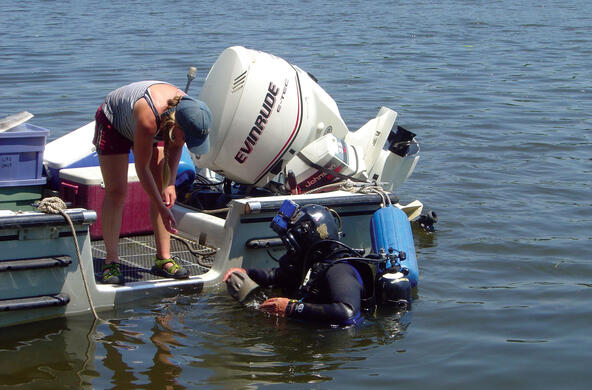We've all heard the expression, "Think global, act local."
In the environmental context, its popularity no doubt comes from a sense of reassurance — that by taking small, personal steps, we can make a difference.
But a leading scientist suggests that in some cases, the reverse is true.
Think invasive species and climate change.
"You should be thinking locally and acting globally on them," says David Strayer, a freshwater ecologist with the Cary Institute of Ecosystem Studies in Millbrook.
Strayer said that in cases like these, you can do all the responsible, thoughtful local actions that you can think of — and still not get where you want to go.
You need to take actions on a larger scale, and those decisions need to be informed by data that are collected in great quantities and with great care over long periods of time.
Strayer's observation came during a conversation he and I had about a paper he and several colleagues published this month in the scientific journal BioScience.
The paper describes some of the changes that have happened to the Hudson River over a period of decades, from the introduction of zebra mussels and changes in fishing habits, to big storms and climate change.
The headline is that from decade to decade, the Hudson has transformed – morphed was the word Strayer used — from one kind of ecosystem into another.
Strayer, who is the paper's lead author, argues that most of the world's large rivers also are changing like this, although the details and causes are different for each river.
The only way to be able to address these changes is to identify and understand them.
And here's the good news: We live alongside one of the most carefully examined rivers in the country.
Strayer compared the number of scientific studies about the Hudson River against 10 other American rivers that are about its size. The list included the Connecticut, Delaware, Susquehanna and Cumberland rivers, among others.
His research found that the Hudson is about 10 times better-studied from a scientific point of view than rivers like it.
All of that work has allowed us to think about large, interconnected problems in a more informed way.
And that needs to continue. The paper argues the river is constantly changing, because the things affecting it are constantly changing as well.
So while our understanding continues to grow, so does the potential for things we don't understand.
"The past is not necessarily a reliable guide to the future," the authors write.
Indeed, the paper is in part an advertisement for more funding to the National Science Foundation and other organizations that support pure research.
To emphasize his point, Strayer used the example of the handyman who cuts his finger using his power tool and then is forced to visit the doctor for the first time in years.
But when the doctor points out that the handyman has not had his cholesterol checked in 10 years, the handyman says he doesn't have time or money for that.
"It's true you could imagine situations where you wouldn't have the time or money to deal with any but the most acute medical crises," Strayer said. "But I don't think anyone would say that is an outstanding way to manage your personal health."
Or the environment.
Rather, continual study not only tells us what is happening now, it also identifies what needs to be examined in the future.
"We will never understand everything about the Hudson," Strayer said, "but you don't need to understand everything — the same way your doctor does not need to understand everything about you. That is a useful question to consider in the case of the Hudson. I think if we wish to, we can continue to study it and work with the people who manage it and continue to have the information we need to manage it wisely."







